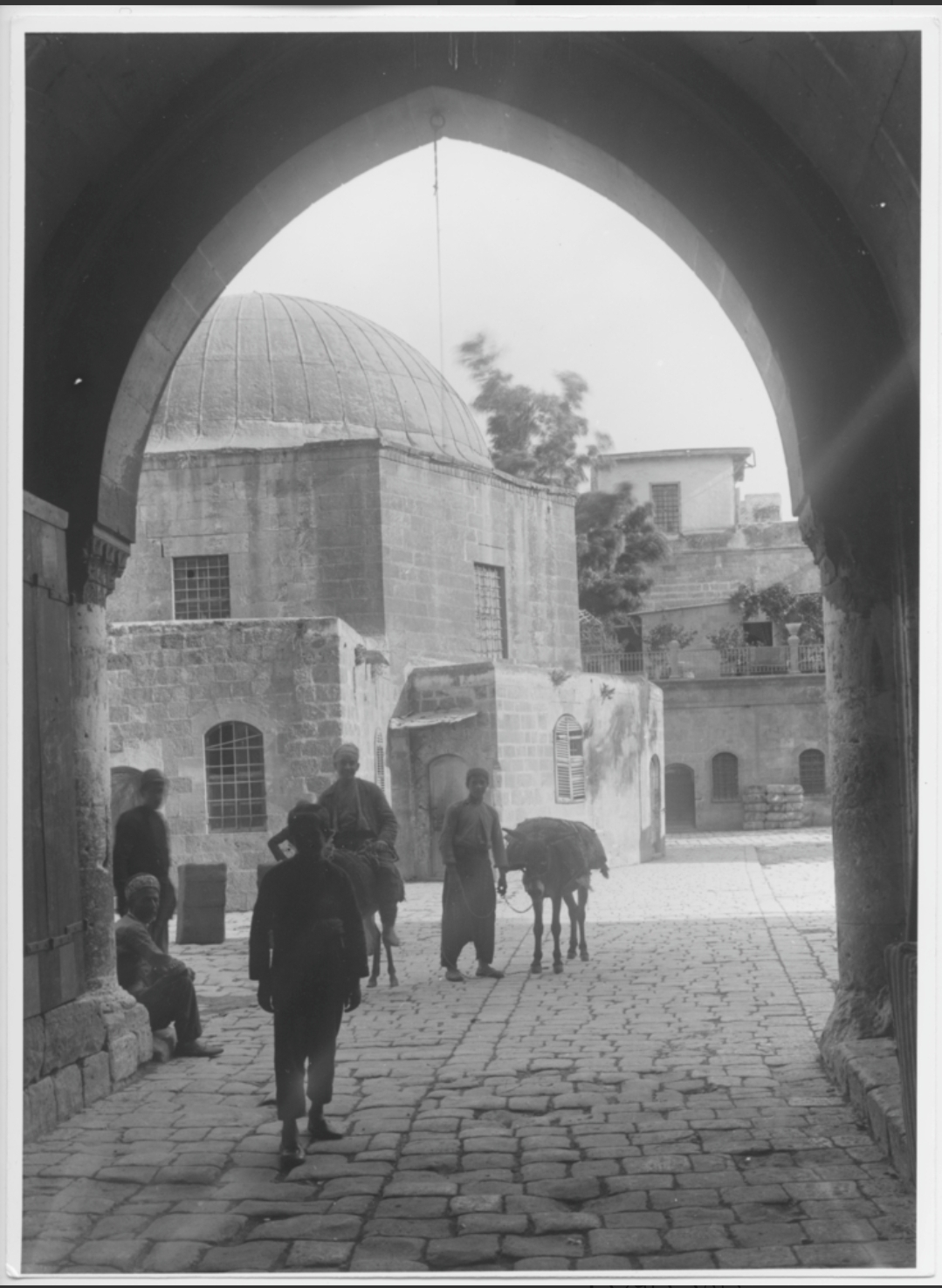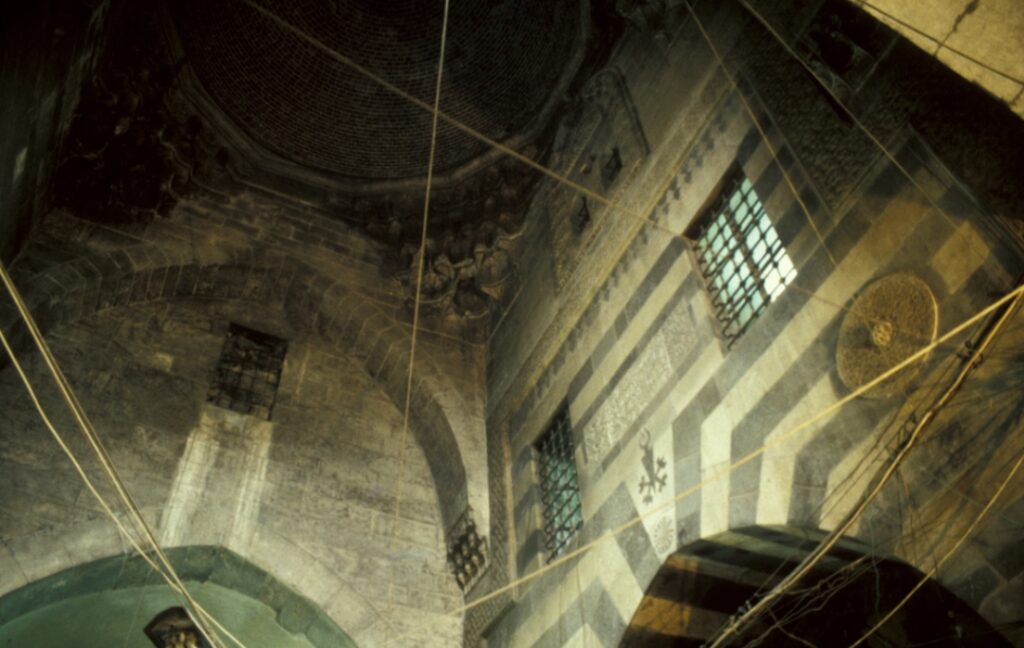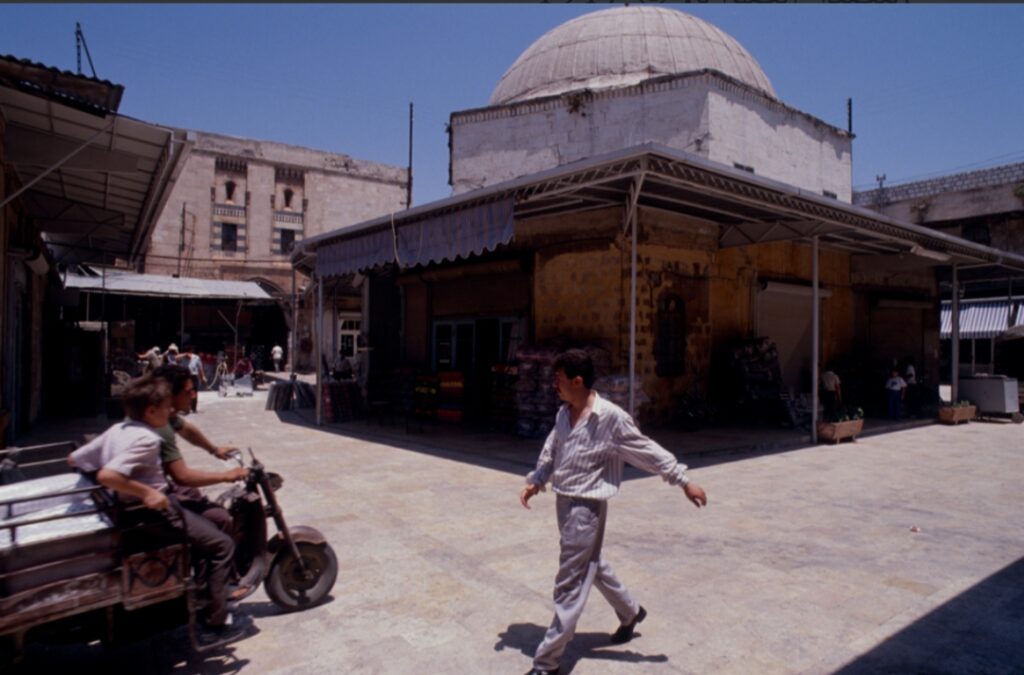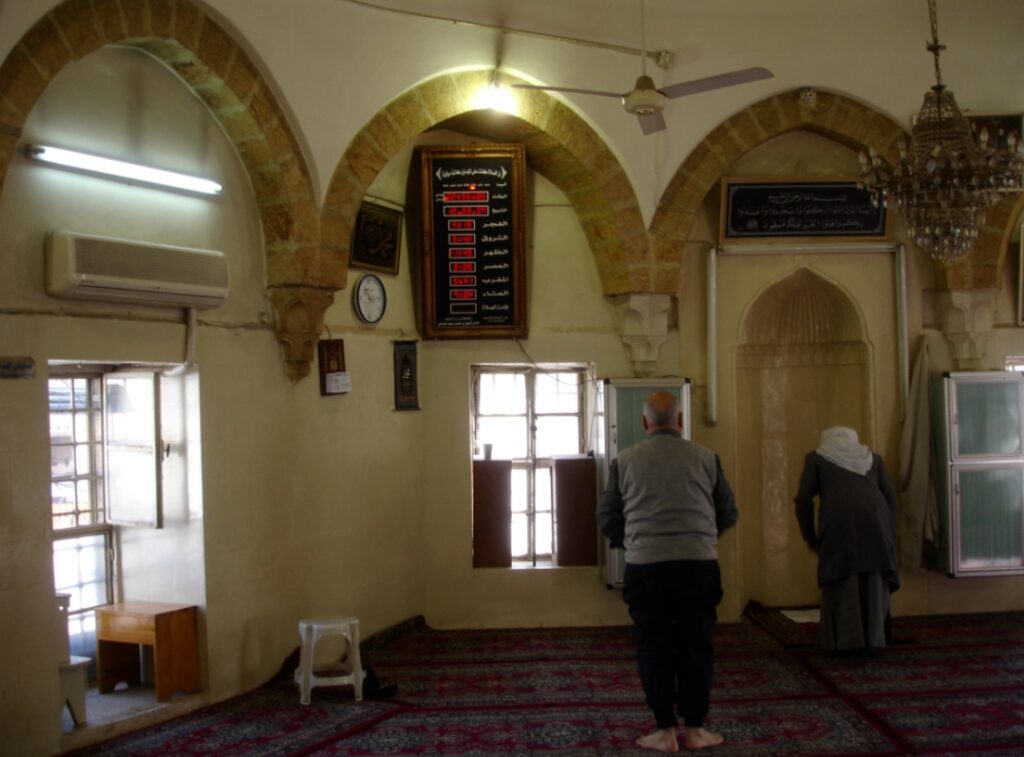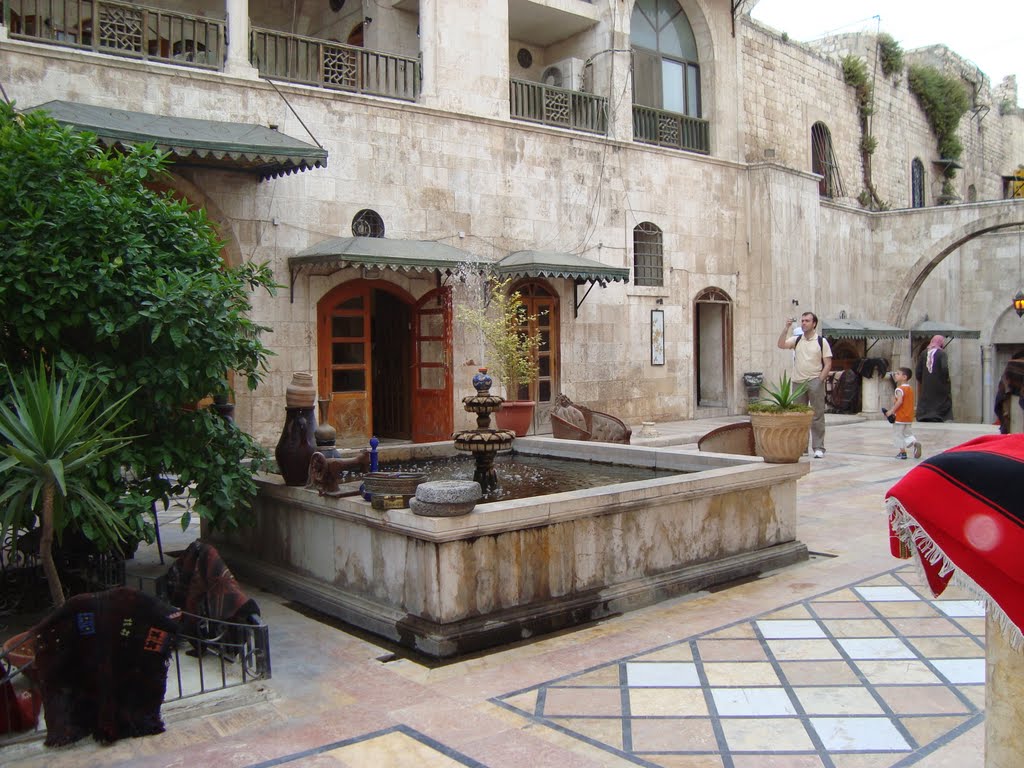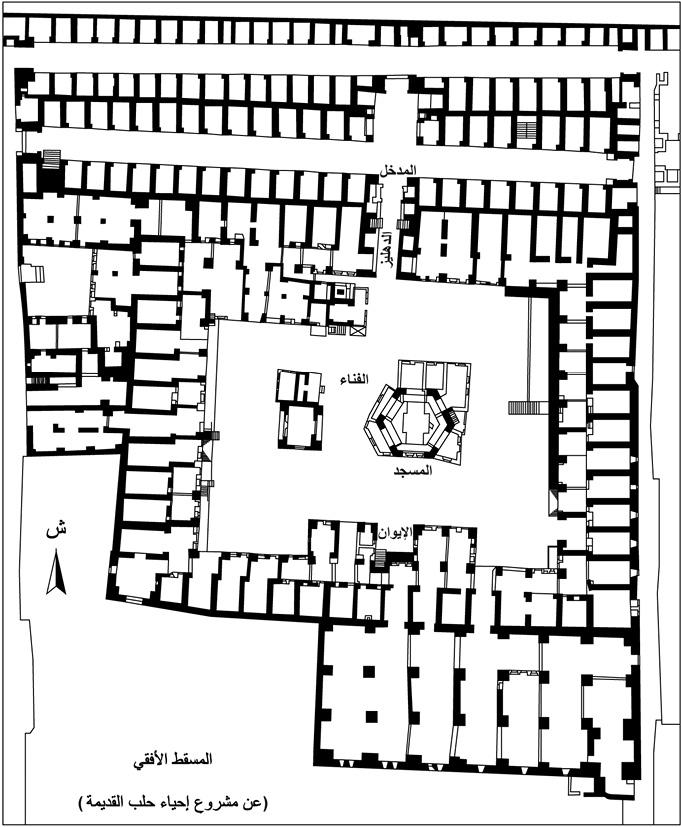Khan al-Jumruk is situated in the Jalloum neighborhood, within the city souq, behind the Great Umayyad Mosque. It was constructed by Ibrahim Khan Zada Sokullu Muhammad Pasha in the year 977 AH / 1569 AD as part of a commercial complex intended to serve as an Islamic endowment, with its proceeds directed to the holy sites (Mecca and Medina). Khan al-Jumruk is regarded as the largest khan in the city of Aleppo, covering an area of 6,400 square meters.
Historically, the khan served as a residence for French, English, and Dutch merchants and housed the consulate for their community. Subsequently, it became the main center for currency exchange and wholesale fabric sales, likely earning its name Khan al-Jumruk due to the presence of customs officials stationed there.
The complex comprises 52 ground-level storerooms, 77 upper rooms, and a mosque. On either side of its entrance lies the Customs Souq (or Al-Hawa), which features 344 shops and a water source, in addition to a stable and a Qaysariyya housing 23 storerooms.
The horizontal layout of the khan consists of an entrance leading to a covered hall topped by a dome supported by walls, with transition zones designed using spherical triangles. This is followed on both sides by the Customs Souq, leading to the grand main entrance of the khan, which is also covered by a dome that rises above four large pointed arches, with the transition from square to circular shape achieved through muqarnas.
Next is a hall topped by an intersecting dome featuring a key shaped like an octagonal star, adorned with muqarnas and pendants within. From this hall, one enters the square courtyard of the khan, which is centered around the khan’s mosque, with staircases on either side leading up to the upper floor that contains numerous shops.
Above the entrance lies an opulent hall prepared for receiving merchants. Generally, the khan consists of two floors: ground and first, with rectangular-shaped shops arranged in rows parallel to the four sides, their facades overlooking the inner courtyard of the khan. A corridor surrounds the courtyard on the upper floor.
During the Syrian war, Khan al-Jumruk sustained significant damage, necessitating extensive restoration efforts. In 2017, the historic Customs Khan souq was reopened after renovations, with 100 out of 107 shops restored while preserving the historical and architectural character of the khan.
Today, the Khan al-Jumruk is regarded as an important tourist and commercial destination, showcasing jewelry, fabrics, carpets, bags, sweets, and natural Aleppo soap, reflecting the rich commercial and cultural heritage of Aleppo.

